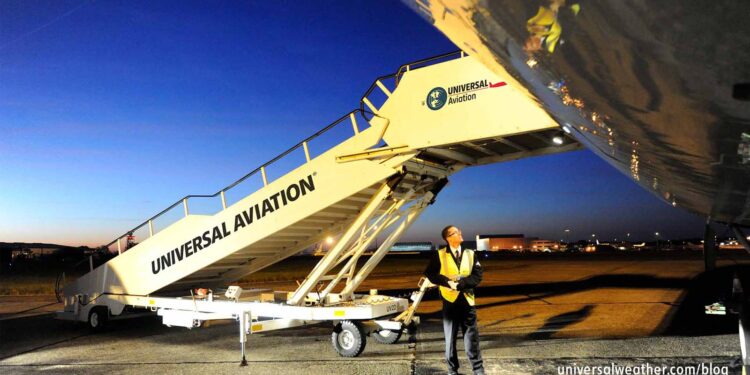Aircraft Ground Support Equipment Requirements: Part 2 of 2 – Planning Tips

This business aviation blog post continues from our article last week, titled “Aircraft Ground Support Equipment Requirements: Part 1 of 2 – Top Considerations.”
It’s important for business aircraft operators to assess support equipment and services needs at each international destination. In some cases, it’s best to research these requirements, with your 3rd-party provider and local ground handler, at least two weeks ahead of day of operation.
The following is an overview of what you need to know:
1. Challenging regions
Availability of support equipment/services is often most challenging at remote airport locations and airfields with infrequent general aviation (GA) traffic. For instance, certain airports in Africa, as well as domestic airports in India, may lack such equipment/services such as fuel or lav trucks and potable water services. Even some popular smaller western European and Caribbean destinations will, from time to time, have issues with GSE and fuel services availability. Some locations in France and Spain, for example, have lav services, but not potable water services.
2. Handler facilities
Particularly at locations without fixed-base operators (FBOs) or general aviation terminals (GATs) it’s important to be aware of local handler facilities, on-site capabilities, and restrictions. Does the handler have access to refrigeration to store in-flight catering, do they have some sort of air conditioned passenger/crew lounge available, and are laundry and/or shower facilities available?
3. Communications options
Always ensure that your mobile phones are able to obtain service at your intended destinations. In certain more remote areas it’s recommended to carry a satellite phone as backup.
4. Medical and spares supplies
Many flight departments routinely carry on-board medical kits – particularly when passengers have known medical issues or require monitoring. Ensure that you have all needed equipment available, such as a defibrillator, and crew have medical training to use this equipment. There are specialized aviation medical support providers who can help in this regard. An enhanced fly-away spares kit may also be appropriate, depending upon your destination, and this should be considered in conjunction with your company minimum equipment list (MEL) and standard operating procedures (SOPs).
5. Allow sufficient lead time
At least two weeks lead time is recommended to research equipment availability and possible restrictions at new and/or unfamiliar airports. This allows enough time to communicate with ground handlers to determine local equipment availability, as well as options and costs to have required equipment brought in. Always check with your handler to determine if they own the required GSE or can rent it from a 3rd-party. In the latter case it’s best to allow at least one week notice to confirm that all arrangements will be made.
6. Plan B considerations
There could be times when you’ll need to have required GSE relocated to your destination airfield. In addition to lead time considerations, be mindful of cost and availability of bringing in required equipment from airports within the region. There may also be insurance liability issues to consider when having this equipment brought in and deployed at your chosen airport. You may need to make advance and/or non-refundable payment to have GSE brought in or particular services arranged and available. Be mindful that if you change your destination last minute, due to lack of available ground equipment, this could impact permits, airport slots, prior permissions required, curfew considerations and customs, immigration and quarantine clearance options. As a general rule, it’s preferable to have at least one week’s notice prior to changing any international destination.
Conclusion
As always, preplanning is key. Inquire about potential service limitations in advance and plan-B best practices for the particular destination(s) you are visiting. Always, follow up on all equipment and services requests with your local ground handler – and in some cases, you may even want a dedicated supervisory agent on the ground waiting for you. All this will help ensure a trouble-free mission.
Questions?
If you have any questions about this article or would like assistance planning for equipment you will need on your next flight, contact me at greglinton@univ-wea.com.



